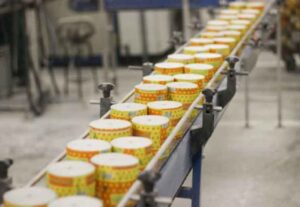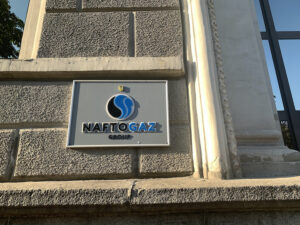
Poninkivska Cardboard and Paper Mill-Ukraine (PKPF-Ukraine, Khmelnytsky region), a major Ukrainian corrugated cardboard producer, increased its corrugated packaging output by 19.9% in January-July 2024 compared to the same period in 2023, to 55.5 million square meters.
According to Ukrpapir Association statistics provided to Interfax-Ukraine, the plant continues to be one of the top three producers of corrugated packaging after Kyiv Cardboard and Paper Mill and Trypillia Packaging Plant.
Over the seven months, the company also increased its production of containerboard by 1.3% to 44.1 thousand tons, and produced more paper by 86.8% to 0.62 thousand tons.
In monetary terms, in January-July, PCBF-Ukraine produced products worth UAH 1 billion 529 million (+15.5%).
As reported with reference to the data collected by the association from the main enterprises of the industry, in January-July 2024, the production of paper and cardboard in Ukraine increased by 4.2% compared to the same period in 2023 – up to 340.35 thousand tons, cardboard boxes – by 18.5%, up to 334.89 million square meters.
Poninkivska Paper Mill (formerly Poninkiv Cardboard and Paper Mill), once the largest producer of school notebooks, now has one main production line – paper and cardboard, producing mainly corrugated cardboard and corrugated packaging, as well as wrapping and waste paper.
The plant is part of the United Cardboard Company-Ukraine (UCC, Lutsk) owned by businessman Mykola Lobov, whose production assets include, among others, Lutsk KPF-Ukraine (Volyn region), which produced 36.7 thousand tons of various cardboard (4.8% more) and 27.7 million square meters of corrugated boxes in seven months (according to Ukrpapir).
As reported, in 2023, PCPF-Ukraine produced products worth almost UAH 2 billion 450 million, up 3% year-on-year. Net profit increased 2.7 times to UAH 27 million.

Kokhavyn paper mill (KBF, Lviv region), which produces sanitary and hygienic paper products, in January-July 2024 increased its output by 61.1% against the same period of 2023 – up to UAH 1 billion 069 million, according to the statistics of the association “UkrPapir”.
As reported, at the end of the half-year the factory’s production growth amounted to 54.5% to the same period last year.
According to the statistical data of the association provided to Interfax-Ukraine, in physical terms, the production of paper-base for sanitary-hygienic products at the factory for seven months increased by 33.6% – up to 32.5 thousand tons.
The output of toilet paper in rolls increased by 1.5% to 80.1 million pieces. KPF confidently ranks second in its output after Kyiv PPC.
As it was reported, in October 2023 Kokhava BF commissioned a paper machine for production of cellulose base paper (earlier they produced only on recovered paper basis). KBF attracted EUR13.8 mln loan from EBRD to organize such production in 2021.
Kokhavinskaya PF, which has been operating since 1939, produces backing paper for sanitary goods, as well as toilet paper and paper towels. Prior to the commissioning of the new machine, it had two PPMs with a total capacity of 40,000 tons of backing paper per year.
In 2023, the mill increased its output by 18% compared to 2022 – up to UAH 1 bln 151.2 mln, net profit increased 2.7 times – up to UAH 137 mln.

The European Commission has disbursed almost EUR 4.2 billion to Ukraine under the Ukraine Facility, bringing the total amount of EU funding allocated to the Ukrainian government under the Ukraine Facility to EUR 12 billion.
This was reported by the European Commission on Tuesday.
“Following a request for disbursement submitted by Ukraine, the Council endorsed the Commission’s assessment that Ukraine has satisfactorily implemented nine reform indicators related to the first regular quarterly payment. These conditions, covering public financial management, management of state-owned enterprises, business environment, energy and demining, were set out in the Plan for Ukraine,” the press release said.
The EC noted that today’s payment follows the initial disbursements made under the Ukraine Facility, namely €6 billion in bridge financing and €1.9 billion in pre-financing, and is evidence of the rapid implementation of the Ukraine Plan.

In January-June 2024, the clients of the Organic Standard certification company set a record and exported 75.34 thousand tons of organic products, which is 32.3% more than in the same period in 2023, the company’s press service reported on its Facebook page.
According to the report, Ukraine exported 56.954 million tons in the first six months of 2023, 47.863 million tons in 2022, and 32.354 million tons in 2021.
“These figures are not just statistics. They reflect the steady growth of Ukrainian organic products on international markets. Step by step, thanks to high quality and strict adherence to international standards, our customers are confidently strengthening their positions in the world,” the company said.
This result was achieved due to the consistently high quality of products, confirmed by certification according to international standards, and the growing demand for organic products, Organic Standard summarized.
Organic Standard LLC is the first Ukrainian certification body that inspects and certifies organic production. It was established in 2007 as part of the Ukrainian-Swiss project “Organic Certification and Development of the Organic Market in Ukraine”.

In January-July 2024, Naftogaz Group paid more than UAH 53 billion in taxes, which is almost 10% more than in the same period in 2023, the company’s website reported on Tuesday.
“The group’s enterprises promptly make tax payments to the budgets of all levels. In July alone, Naftogaz paid more than UAH 6 billion to the consolidated budget of Ukraine,” Oleksiy Chernyshov, Chairman of the Board of Naftogaz of Ukraine, was quoted as saying.
In July, UAH 5.5 billion was paid to the state budget and UAH 0.5 billion to local budgets.
As reported, in 2023, Naftogaz Group companies paid UAH 90.2 billion in taxes, UAH 83.4 billion of which went to the state budget and UAH 6.8 billion to local budgets.

The Seed Treatment Technology Laboratory of the production complex of the international agricultural research company Corteva Agriscience has passed international round tests to determine the dust content of treated seeds (Heubach test) and received a certificate of high quality of seed protection products and seed safety for consumers and the environment, the company’s press service reports.
“Corteva Agriscience’s seed treatment allows farmers to effectively protect their crops during germination and plant formation. This is a full-fledged comprehensive protection against the risks associated with soil pests and diseases, seed diseases, as well as pests and nematodes that affect plants in the early stages of crop development, when the disease can lead to complete loss of crops,” said Stepan Derkach, Category Marketing Manager for Corteva Agriscience Seed Treatment Technologies in Ukraine.
Opened at the end of 2021, Corteva’s Seed Treatment Technology Laboratory checks the quality of application of protection products on all seeds of premium genetics of the Pioneer® brand, which the company’s seed production complex produces for farmers in Ukraine, Europe and Central Asia.
The Heubach test is a laboratory test that assesses how much dust is generated during mechanical impact, such as during transportation or sowing of seeds. Excessive dust can not only affect the quality of seeds during cultivation, but also pose risks to human health and the environment in case of poor application of treatment products.
Corteva Agriculture is a global agricultural company. It offers comprehensive solutions to maximize yields and profitability. It has more than 150 research facilities and more than 65 active ingredients in its portfolio. The company’s representative office in Ukraine includes the headquarters in Kyiv, a research center in Liubartsi village (Kyiv region) and a seed production complex in Stasi village (Poltava region).
In April 2022, the company decided to leave the Russian market due to the full-scale war against Ukraine unleashed by Russia.